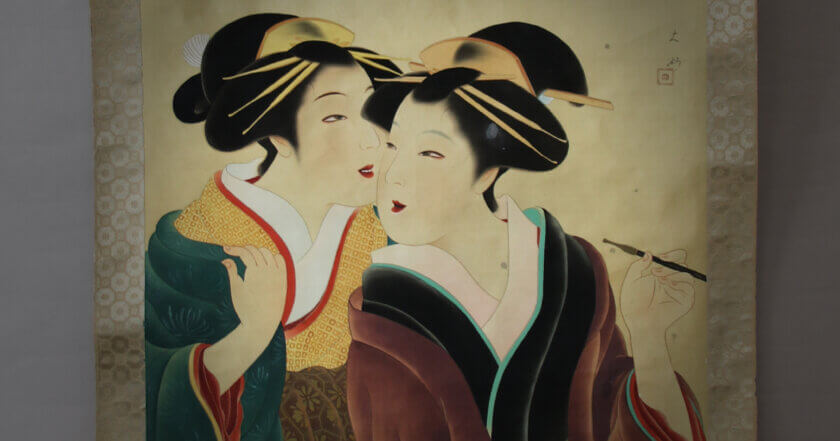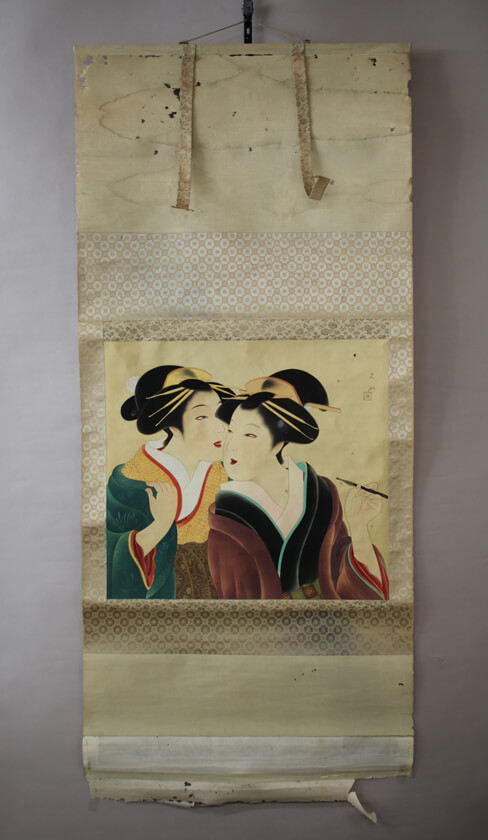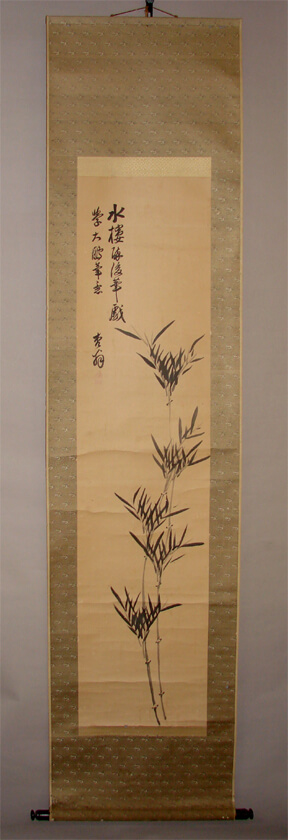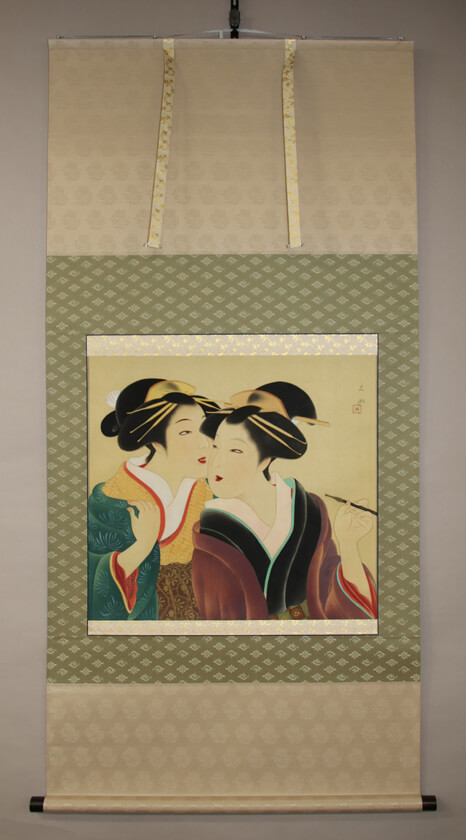Scrolls, Deepening Family Bonds: A Special Restoration Request from Abroad

Kakejikus are art pieces that have been inherited as part of Japan’s traditional culture.
The desire to recognize their value and pass it on to descendants is not limited to people within Japan.
This time, we introduce a special request from a customer living in the United States, who cherishes scrolls from afar and wished for their restoration.
The consultation came from an American woman, who requested the repair of two scrolls inherited from her deceased parents.
One of the scrolls, a beauty painting, was overall in a terrible condition with bug damage and severe dirt. The situation was worsened by the missing roller rod.

The other scroll, featuring bamboo, had multiple severe creases. While remounting could recover it to some extent, whether it could be completely flattened was uncertain until the remounting was attempted due to the severity of the creases.

These scrolls are not just art pieces but also precious mementos inherited from her parents. After the restoration, they were planned to be given as a surprise present to her grandchildren.
No scroll mounter would not wish for scrolls to be passed on to the next generation. Our company is no exception, and we approached the restoration with all our skill and heart, hoping to meet the customer’s expectations.
The restoration was a challenging task, but our craftsmen utilized their expertise to beautifully revive the beauty painting scroll. The bamboo scroll was also successfully restored, with the creases flattened and dirt removed, making the ink expressions stand out and enhancing the original beauty of the work.


After sending the scrolls back to the customer without receiving any immediate response, we were anxious about whether she was satisfied with the outcome. However, about half a year later, we received the following response:
We finally opened the scroll boxes (we were waiting for these to be a surprise for the grand children) I waited patiently and finally got to see them!
They are beautiful- thank you so much for your hard work – much appreciated!!
It turned out that the customer had waited about half a year to open the scrolls together with her grandchildren, keeping the scrolls in their boxes without even looking at them herself.
We were moved by the fact that the customer had waited so long for this special moment with her grandchildren. Knowing that the customer and her family were ultimately satisfied brought us immense joy.
The words of gratitude from the customer are the greatest praise for our work, and we are committed to continuing such special projects to share Japanese culture with more people around the world.

